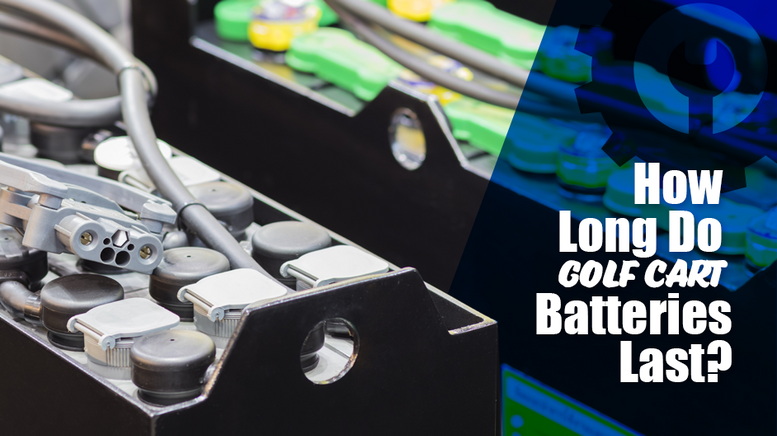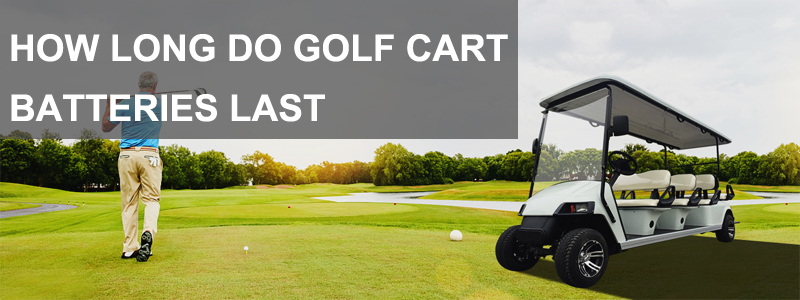Content Menu
● Types of Golf Cart Batteries
>> Lead-Acid Batteries
>> Lithium-Ion Batteries
● Average Lifespan of Golf Cart Batteries
● Factors Affecting Battery Lifespan
>> Battery Type
>> Usage Patterns
>> Charging Habits
>> Temperature
>> Maintenance
● Maximizing Golf Cart Battery Life
● Signs of Battery Deterioration
● Replacing Golf Cart Batteries
● Environmental Considerations
● Cost Comparison: Lead-Acid vs. Lithium-Ion
● Technological Advancements
● Case Studies: Real-World Battery Longevity
>> Case 1: Golf Course Fleet
>> Case 2: Private Owner
>> Case 3: Resort Community
● The Impact of Driving Habits
● Seasonal Considerations
>> Summer
>> Winter
● The Role of Battery Management Systems
● Future of Golf Cart Batteries
● Conclusion
● FAQ
>> 1. How often should I charge my golf cart batteries?
>> 2. Can I mix old and new batteries in my golf cart?
>> 3. How do I know when it's time to replace my golf cart batteries?
>> 4. Are lithium-ion batteries worth the higher cost for golf carts?
>> 5. How should I store my golf cart during the off-season to protect the batteries?
Electric golf carts have become increasingly popular due to their eco-friendly nature and low maintenance requirements. One of the most crucial components of these vehicles is their battery system. Understanding the lifespan of golf cart batteries is essential for owners to ensure optimal performance and longevity of their carts. In this comprehensive guide, we'll explore the factors that influence battery life, maintenance tips, and much more.

Types of Golf Cart Batteries
Before delving into battery lifespan, it's important to understand the different types of batteries used in electric golf carts:
Lead-Acid Batteries
Lead-acid batteries are the most common type used in golf carts. They come in two varieties:
1. Flooded Lead-Acid Batteries
2. Sealed Lead-Acid Batteries (including AGM and Gel)
Lithium-Ion Batteries
Lithium-ion batteries are a newer, more advanced option for golf carts. They offer several advantages over lead-acid batteries but come at a higher initial cost.
Average Lifespan of Golf Cart Batteries
The lifespan of golf cart batteries can vary significantly depending on several factors. Here's a general overview:
- Lead-Acid Batteries: 4-6 years
- Lithium-Ion Batteries: 7-10 years
However, these are just averages. With proper care and maintenance, some batteries can last even longer.
Factors Affecting Battery Lifespan
Several factors influence how long golf cart batteries last:
Battery Type
As mentioned earlier, lithium-ion batteries typically last longer than lead-acid batteries. They also require less maintenance and can withstand more charge cycles.
Usage Patterns
How often and how long you use your golf cart significantly impacts battery life. Frequent deep discharges can shorten the lifespan of lead-acid batteries.
Charging Habits
Proper charging is crucial for battery longevity. Overcharging or undercharging can damage batteries and reduce their lifespan.
Temperature
Extreme temperatures, both hot and cold, can affect battery performance and lifespan. Storing batteries in a temperature-controlled environment when not in use can help prolong their life.
Maintenance
Regular maintenance, especially for lead-acid batteries, is essential for maximizing battery life. This includes checking water levels, cleaning terminals, and ensuring proper electrolyte levels.
Maximizing Golf Cart Battery Life
To get the most out of your golf cart batteries, follow these best practices:
1. Charge batteries after each use
2. Avoid deep discharges (below 50% for lead-acid batteries)
3. Use the correct charger for your battery type
4. Keep batteries clean and free from corrosion
5. Store golf carts in a cool, dry place when not in use
6. Perform regular maintenance checks

Signs of Battery Deterioration
Watch for these signs that indicate your golf cart batteries may be nearing the end of their life:
1. Reduced range or power
2. Longer charging times
3. Difficulty holding a charge
4. Visible damage or swelling
5. Excessive heat during charging
Replacing Golf Cart Batteries
When it's time to replace your golf cart batteries, consider the following:
1. Replace all batteries at once for optimal performance
2. Choose batteries of the same type and capacity
3. Consider upgrading to lithium-ion batteries for longer life and better performance
Environmental Considerations
Proper disposal of old golf cart batteries is crucial for environmental protection. Many battery retailers offer recycling programs for lead-acid batteries. Lithium-ion batteries should be recycled through specialized facilities.
Cost Comparison: Lead-Acid vs. Lithium-Ion
While lithium-ion batteries have a higher upfront cost, their longer lifespan and reduced maintenance requirements can make them more cost-effective in the long run. Here's a comparison:
| Battery Type | Initial Cost | Lifespan | Maintenance | Total Cost of Ownership |
| Lead-Acid | Lower | 4-6 years | High | Moderate |
| Lithium-Ion | Higher | 7-10 years | Low | Lower over time |
Technological Advancements
The field of battery technology is rapidly evolving. New developments in lithium-ion chemistry and other alternative battery types promise even longer lifespans and improved performance for future golf carts.
Case Studies: Real-World Battery Longevity
To provide a more concrete understanding of golf cart battery lifespan, let's look at some real-world examples:
Case 1: Golf Course Fleet
A busy golf course in Florida replaced their lead-acid batteries every 4-5 years due to heavy daily use and exposure to high temperatures.
Case 2: Private Owner
A retiree in Arizona reported his lithium-ion batteries lasting over 8 years with regular use and proper maintenance.
Case 3: Resort Community
A resort community in California switched to lithium-ion batteries and saw an average lifespan increase from 5 years to 9 years across their fleet.

The Impact of Driving Habits
Your driving habits can significantly affect battery life. Here are some tips for battery-friendly driving:
1. Avoid rapid acceleration and sudden stops
2. Plan routes to minimize unnecessary hills or rough terrain
3. Don't overload the cart beyond its capacity
4. Use energy-saving features like regenerative braking if available
Seasonal Considerations
Battery performance and lifespan can vary with the seasons:
Summer
- Higher temperatures can increase water loss in lead-acid batteries
- More frequent use may require more frequent charging
Winter
- Cold temperatures can reduce battery capacity
- Less frequent use may lead to battery discharge if not properly maintained
The Role of Battery Management Systems
Modern lithium-ion batteries often come with built-in Battery Management Systems (BMS). These systems help:
- Balance cell voltages
- Prevent overcharging and over-discharging
- Monitor battery temperature
- Extend overall battery life
Future of Golf Cart Batteries
As technology advances, we can expect to see:
1. Longer-lasting batteries
2. Faster charging times
3. Improved energy density
4. More environmentally friendly materials
5. Integration with smart technologies for better monitoring and management
Conclusion
The lifespan of golf cart batteries depends on various factors, including battery type, usage patterns, maintenance, and environmental conditions. While lead-acid batteries typically last 4-6 years, lithium-ion batteries can last 7-10 years or more. By understanding these factors and following best practices for battery care, golf cart owners can maximize the life of their batteries and ensure optimal performance of their vehicles.
Regular maintenance, proper charging habits, and careful usage are key to extending battery life. As technology continues to advance, we can look forward to even more efficient and long-lasting battery options for electric golf carts in the future.

FAQ
1. How often should I charge my golf cart batteries?
It's best to charge your golf cart batteries after each use, regardless of how long you've used the cart. For lead-acid batteries, avoid letting the charge drop below 50%. Lithium-ion batteries are more flexible but still benefit from regular charging.
2. Can I mix old and new batteries in my golf cart?
It's not recommended to mix old and new batteries in your golf cart. This can lead to uneven charging and discharging, which can damage both the old and new batteries. Always replace all batteries at the same time for optimal performance and longevity.
3. How do I know when it's time to replace my golf cart batteries?
Signs that it's time to replace your batteries include reduced range, longer charging times, difficulty holding a charge, and visible damage or swelling. If your golf cart's performance has noticeably decreased and the batteries are more than 5 years old, it's likely time for a replacement.
4. Are lithium-ion batteries worth the higher cost for golf carts?
While lithium-ion batteries have a higher upfront cost, they often prove more cost-effective in the long run due to their longer lifespan, reduced maintenance requirements, and better performance. For frequent users or those looking for improved performance, lithium-ion batteries can be a worthwhile investment.
5. How should I store my golf cart during the off-season to protect the batteries?
For off-season storage, fully charge the batteries and disconnect them if possible. Store the cart in a cool, dry place away from extreme temperatures. For lead-acid batteries, check water levels and charge periodically (every 4-6 weeks). Lithium-ion batteries require less maintenance but should still be checked occasionally during long-term storage.











































